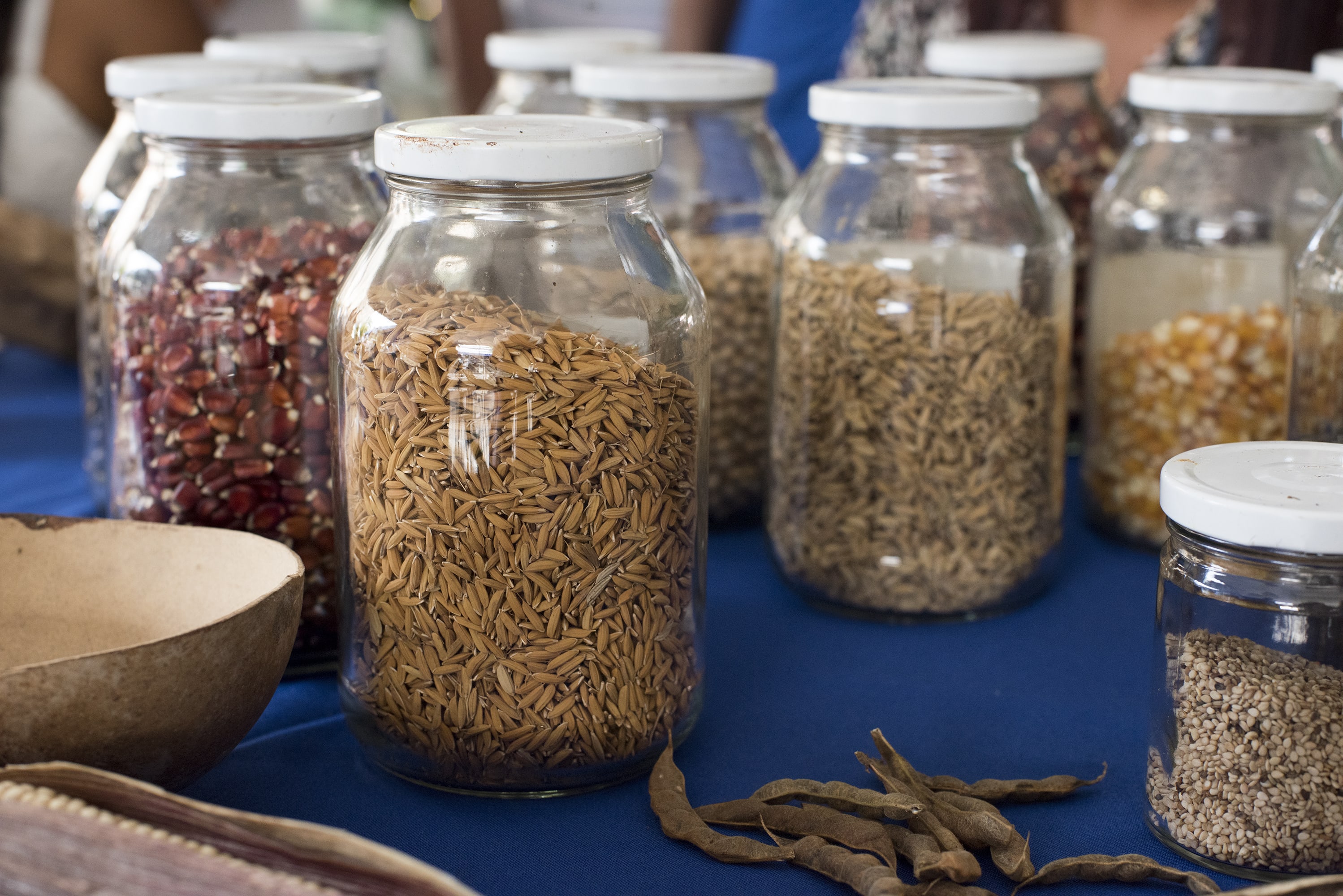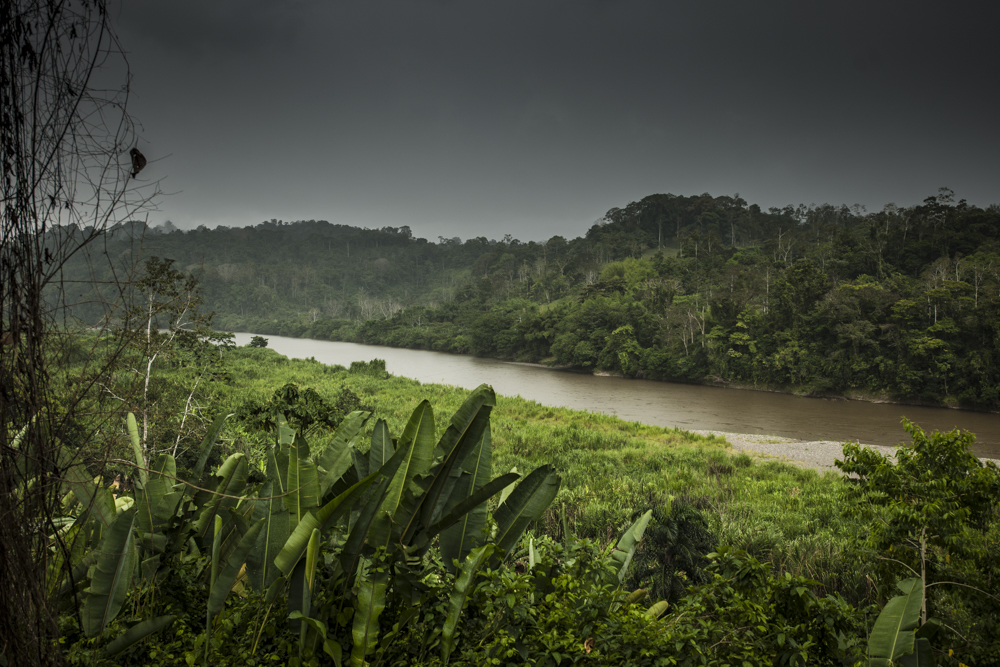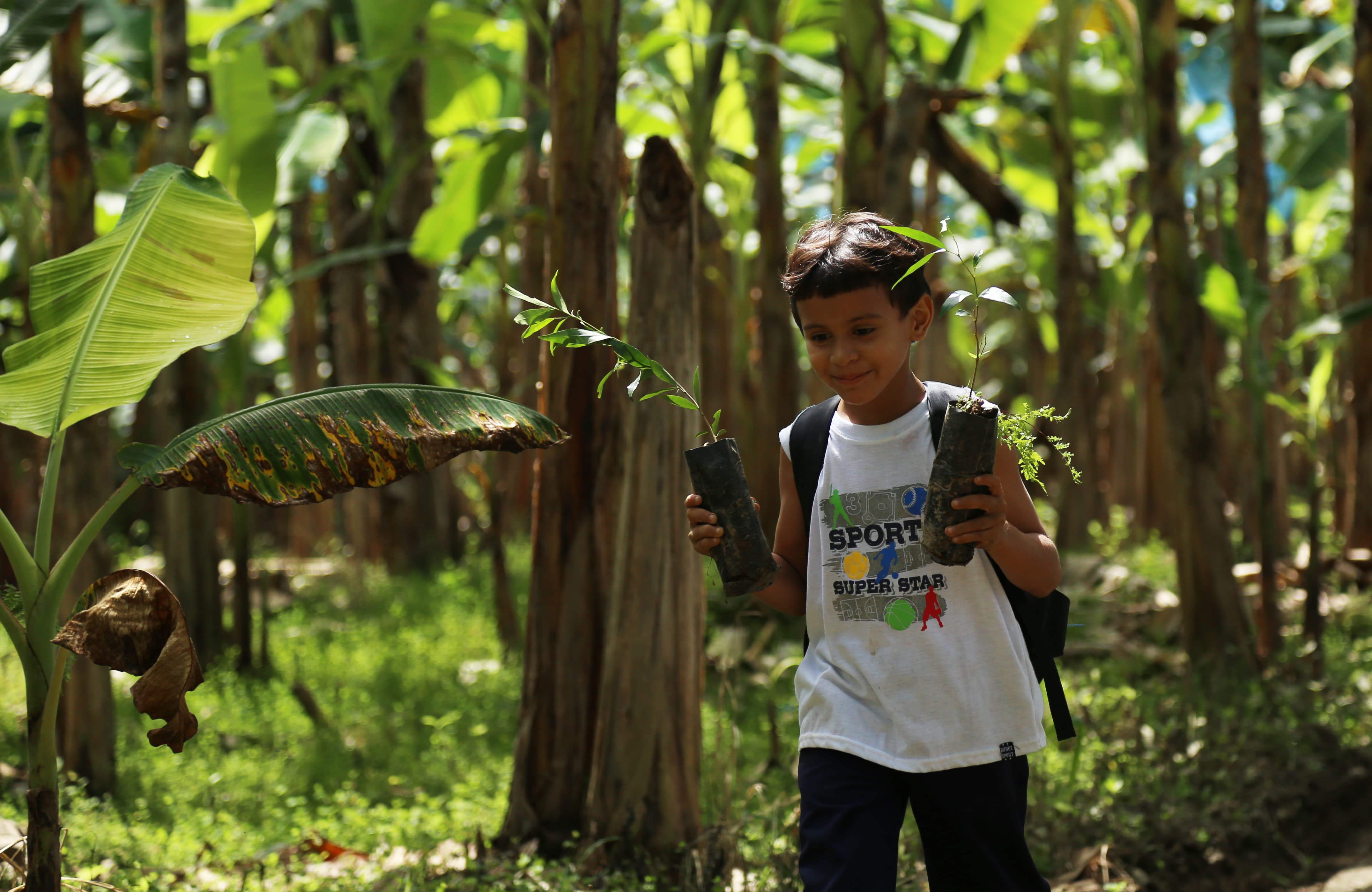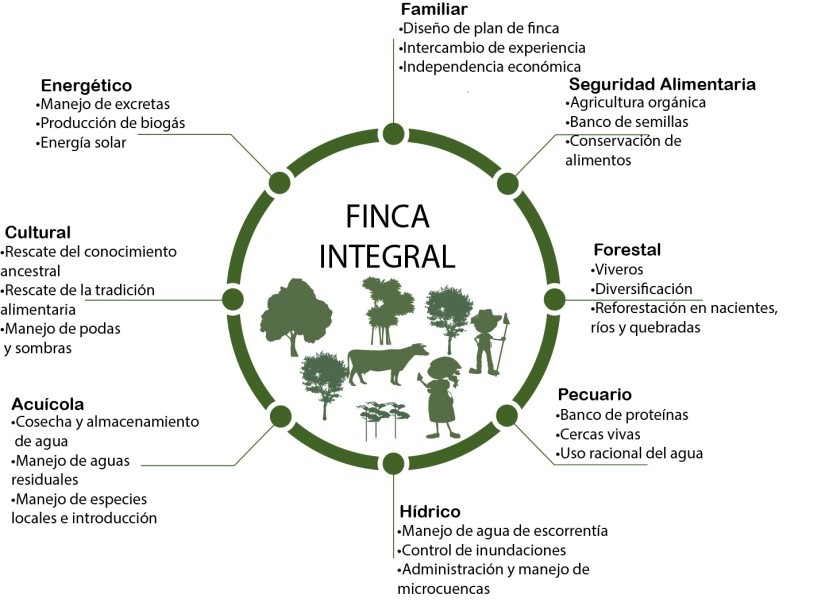Community ownership of adaptation measures based on ecosystems and biodiversity
Native seed exchange
IUCN @ Credit: Pablo Cambronero
Riverbank forest restoration
IUCN @ Credit: Paul Aragón
Reforestation involving schoolchildren
IUCN @ Credit: Paula Cruz
Model of an integrated farm
IUCN
Communities took ownership of the following EbA measures once prioritized and implemented in a participatory manner in the basin:
- Restoration of riparian forests. Binational reforestation events are held involving local communities and schools. These efforts reduce erosion, mitigate the risk of floods, and reinforce cross-border cooperation and local empowerment, including youth. The sustainability of this action is integrated into a reforestation strategy for the middle basin.
- Integral farms / agroforestry systems. Practices are incorporated to manage ecosystem services and generate a high diversity of products (agricultural, forestry and energy). Soil conservation practices and a transition to agroforestry systems with crops and tree diversification, tropical orchards, sowing of basic grains and protein banks are promoted.
- Recovery and valuing of autochthonous seeds and varieties. Agrobiodiversity Fairs are organized to promote the conservation of genetic diversity (criollo seeds) and their traditional knowledge. The impact attributed to the Fair can be seen in the increases in: participation (exhibitors), diversity of species (> 220) and offer of value-added products.
- The Agrobiodiversity Fair was born out of the need, identified by communities, to highlight the importance of genetic diversity for local livelihoods and adaptation.
- Since its first organization in 2012, the Fair is becoming notorious, and consolidated, with the involvement of more and more institutions (indigenous associations; municipalities; government institutions such as ministries, institutes for rural development, learning or agricultural research; universities; and the CBCRS) as well as visitors.
- Local wisdom relating to climate variability and extreme events, comes from traditional knowledge on resilience and adaptation, and is a key ingredient in building community responses to climate change.
- Working with families was an effective model, as was the promotion of 9 demonstrative integral farms (replicated in 31 new farms). The integral farm produces a high diversity of products (agricultural, forestry and energy) and optimizes the management of natural resources. If it is framed at the landscape level, this production model consolidates the EbA approach and facilitates its scaling up.
- The Agrobiodiversity Fair turned out to be a valuable space for producers; there they can create direct contacts for exchanging experiences, information and genetic material, and so there is a growing number of exhibitors that come from more and more communities.
- The level of institutional commitment observed in the organizations involved, gives importance to the conservation and rescue of native seeds and their relationship with adaptation.




